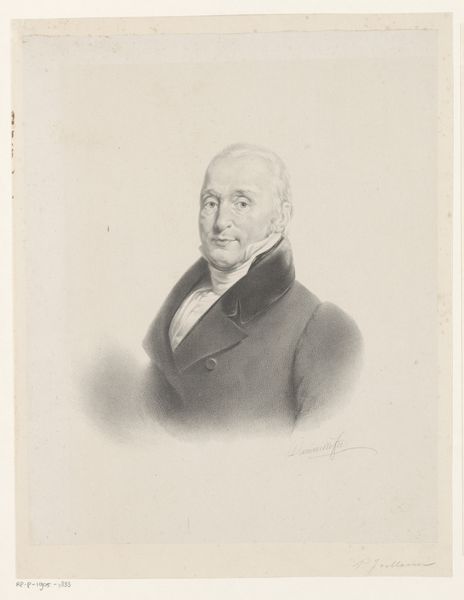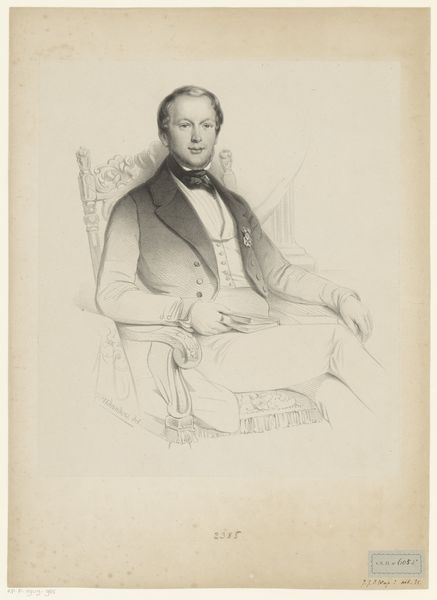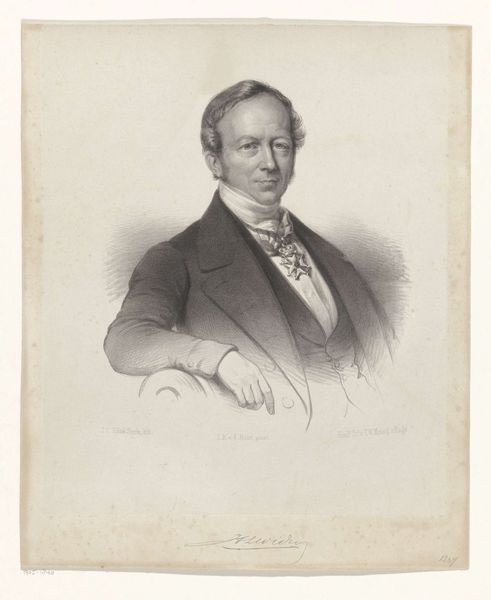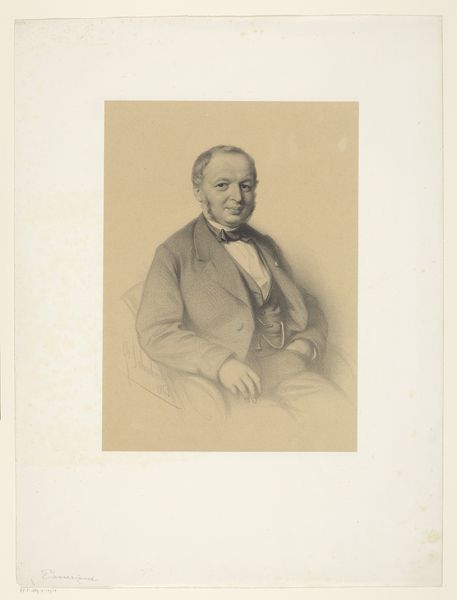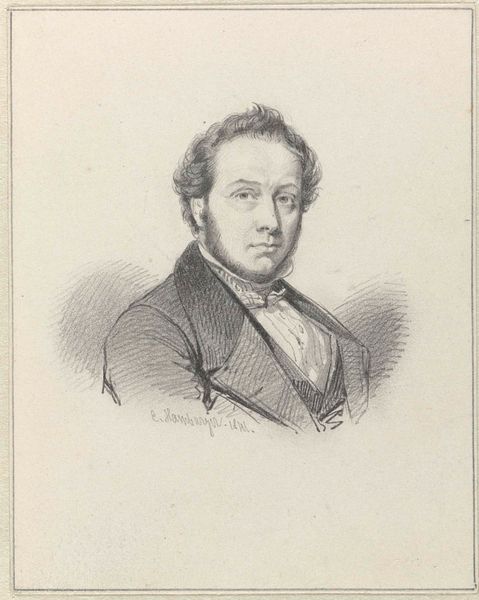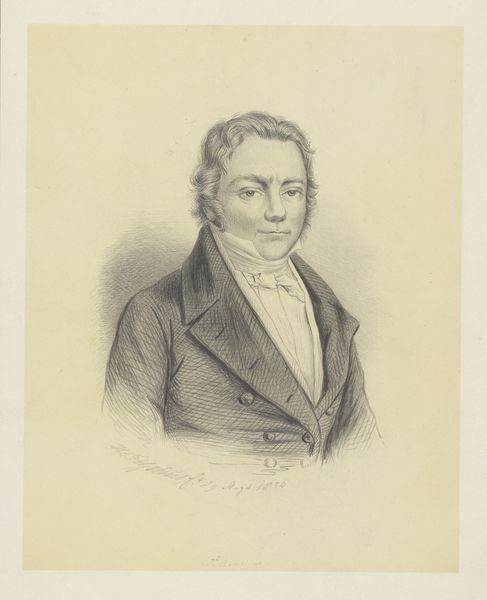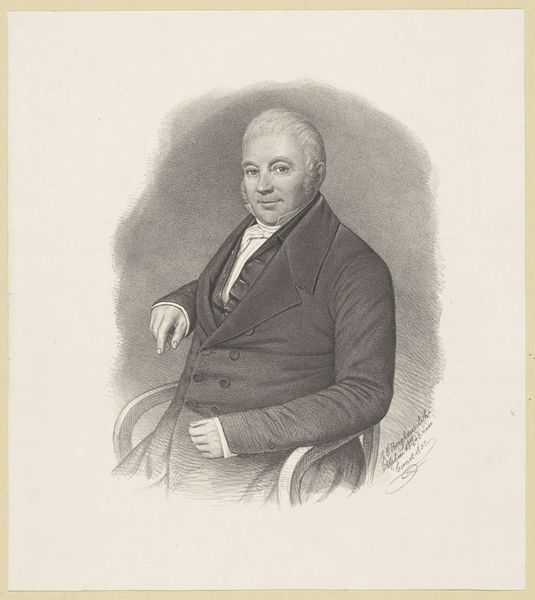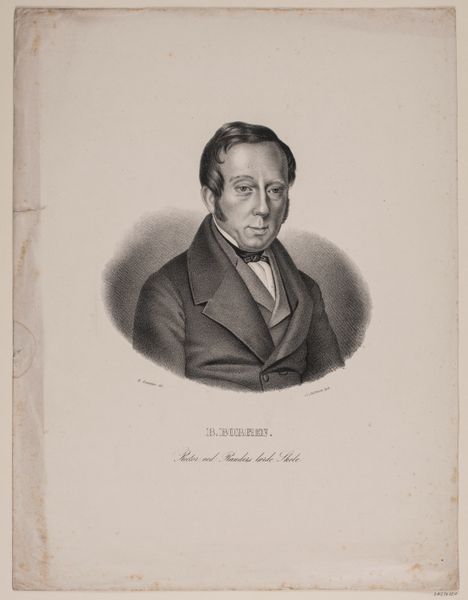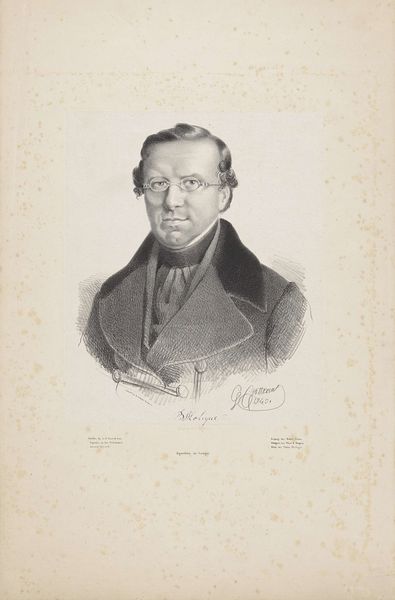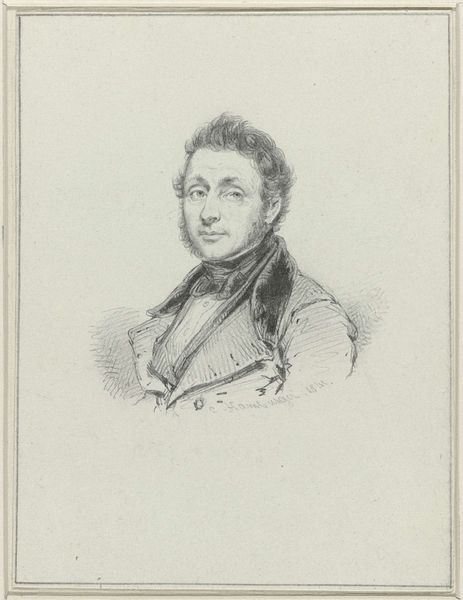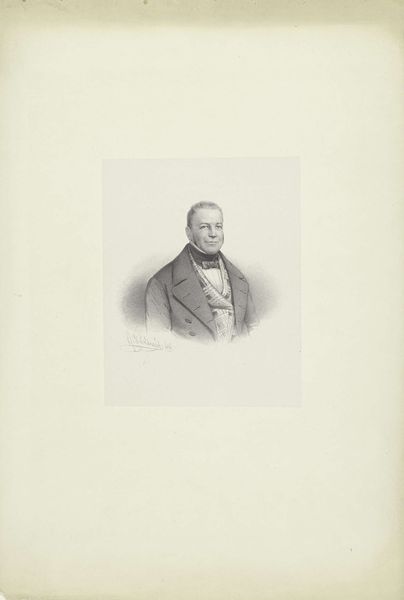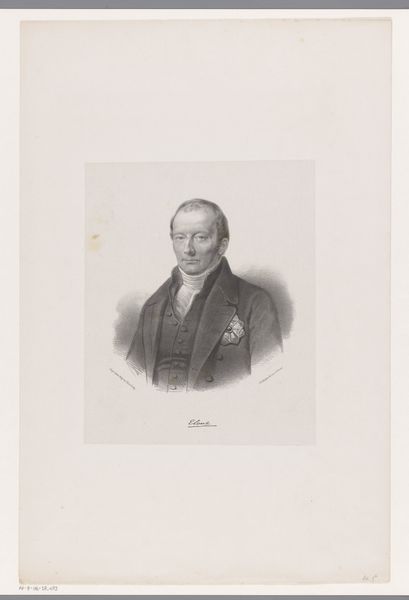
drawing, pencil
#
portrait
#
drawing
#
pencil sketch
#
figuration
#
pencil drawing
#
romanticism
#
pencil
#
academic-art
#
realism
Dimensions: height 168 mm, width 130 mm
Copyright: Rijks Museum: Open Domain
Curator: This is a pencil drawing from 1843 entitled "Portret van Gerrit Lamberts, zittend in een stoel," or "Portrait of Gerrit Lamberts, sitting in a chair," created by Coenraad Hamburger. Editor: There's a striking quietude to it, a certain stillness in the pose and the subtle shading. It feels very intimate, like a stolen moment of observation. Curator: Precisely. Hamburger was working within a Romantic, academic-art tradition, interested in capturing not just a likeness, but also the character of the sitter. Pencil, in this era, lent itself well to delicate depictions. Editor: I wonder what kind of social standing Gerrit Lamberts held. His somewhat severe, yet composed expression— and the fineness of his coat collar— speaks to a certain level of bourgeois respectability. Curator: Agreed. There's a psychological weight, isn’t there? Consider the direction of his gaze, slightly off-center, creating an emotional distance, almost contemplative, suggesting the depth beyond what's immediately seen. The chair acts almost like a throne, albeit understated. Editor: Right, it's subtle visual cues that contribute to the larger narrative. What do we know of the artist, and whether the image alludes to societal standards, the power dynamics, or expectations surrounding masculine identity at the time? The sketch gives a sense of quiet power and confidence but through a filtered lens, perhaps. Curator: Hamburger occupied a space where portraiture was very much about upholding status, while imbuing some form of humanistic quality within the art. In the symbolism of portraiture, we see reflections of societal values, and a visual codification of how people wished to be remembered, presented in their best light. Editor: It leaves me thinking about the role portraiture served in shaping collective memory and propagating ideas about the social hierarchy. Whose stories were valued, memorialized, and which were actively obscured or omitted. Curator: Indeed. We get a glimpse of Gerrit Lamberts, captured in a particular historical moment and presented for posterity. Editor: A subtle reminder, perhaps, that behind every portrait lies a complex network of social and personal stories waiting to be uncovered and retold.
Comments
No comments
Be the first to comment and join the conversation on the ultimate creative platform.
